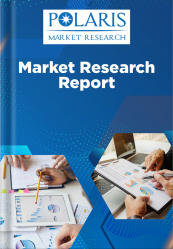Lipid Regulators Market Forecast: 2024–2030 Growth Analysis
Lipid Regulators Market: Rising Prevalence of Cardiovascular Diseases Drives Demand for Lipid-Lowering Therapies
Market Overview
The lipid regulators market is experiencing steady expansion as cardiovascular diseases (CVDs) continue to pose a leading threat to global health. Lipid regulators—also known as lipid-lowering agents—are essential pharmacological treatments used to manage high cholesterol levels and prevent heart attacks, strokes, and other complications associated with dyslipidemia. These agents include statins, fibrates, bile acid sequestrants, and newer drug classes like PCSK9 inhibitors.
Lipid Regulators Market size was valued at USD 7.25 billion in 2023. The market is anticipated to grow from USD 7.64 billion in 2024 to USD 11.75 billion by 2032, exhibiting a CAGR of 5.5% during the forecast period.
LSI Keywords:
Cholesterol-lowering drugs
Hyperlipidemia treatment
Cardiovascular risk management
Statin-based therapies
Key Market Growth Drivers
1. Rising Prevalence of Hyperlipidemia and Cardiovascular Disorders
A major growth driver for the lipid regulators market is the increasing incidence of hyperlipidemia, particularly in aging populations and individuals with sedentary lifestyles, obesity, and diabetes. According to WHO, CVDs account for an estimated 17.9 million deaths globally per year, with high cholesterol being a primary risk factor. This rising health burden is propelling the demand for cholesterol-lowering drugs, especially in developed and emerging economies.
2. Advancements in Lipid-Lowering Therapies
Significant advances in the development of new drug classes, including PCSK9 inhibitors (e.g., evolocumab, alirocumab), bempedoic acid, and combination therapies (e.g., statins plus ezetimibe), are improving outcomes for patients who are unresponsive to traditional statin-based therapies. These innovations offer alternative mechanisms of action, reduced side effects, and better compliance rates, thereby expanding market potential.
3. Increased Preventive Healthcare Spending
Governments and private insurers across the globe are investing more in preventive care due to the cost burden of chronic illnesses. Screening programs for cholesterol and lipid profiles have become routine in annual health checks. Consequently, more patients are being diagnosed and started on hyperlipidemia treatment regimens earlier, boosting long-term drug consumption.
4. Public Awareness and Lifestyle Changes
Public health campaigns have increased awareness about the risks of high cholesterol and the importance of cardiovascular risk management. This, coupled with growing fitness and nutrition awareness, has pushed more people to undergo lipid panel testing and adhere to prescribed therapies. Digital tools and apps have also contributed by offering medication reminders and tracking lipid levels.
Market Challenges
1. Side Effects and Statin Intolerance
Despite their effectiveness, statin-based therapies are associated with adverse effects such as muscle pain, liver enzyme abnormalities, and increased diabetes risk. Statin intolerance affects approximately 5–10% of patients, leading to poor adherence or treatment discontinuation. This challenge has prompted demand for alternative therapies but also remains a barrier to optimal market penetration.
2. Patent Expiry and Generic Competition
Several blockbuster lipid-lowering drugs, including atorvastatin and rosuvastatin, have lost patent protection in recent years. The entry of generic versions has intensified price competition and reduced revenue margins for branded drugs, particularly in North America and Europe. While generics improve accessibility, they also limit profit growth for established pharmaceutical players.
3. High Cost of Innovative Therapies
New treatments like PCSK9 inhibitors are effective but expensive, with annual costs running into thousands of dollars per patient. Limited insurance coverage or reimbursement restrictions in many regions curtail their widespread use, especially in developing countries. Cost remains a major barrier to the adoption of these cutting-edge therapies.
4. Limited Compliance and Long-Term Adherence
Chronic conditions like hyperlipidemia often require lifelong medication. However, poor patient adherence due to pill fatigue, perceived lack of symptoms, or financial constraints significantly reduces treatment efficacy. Efforts to improve adherence through once-daily or combination pills are being explored but present challenges in real-world implementation.
Browse Full Insights:https://www.polarismarketresearch.com/industry-analysis/lipid-regulators-market
Regional Analysis
North America
North America remains the largest market for lipid regulators, led by the United States. High healthcare spending, advanced diagnostic infrastructure, and widespread access to cholesterol-lowering drugs support strong demand. Additionally, the region is a leader in innovation, with many new therapies originating from U.S.-based pharmaceutical companies. Increased screening efforts and robust reimbursement systems also promote uptake.
Europe
Europe follows closely, with Germany, France, the UK, and Italy as key contributors. Public healthcare systems and aging populations drive the region’s demand for hyperlipidemia treatment. The European Society of Cardiology’s guidelines emphasize preventive lipid management, creating a standardized treatment landscape. However, reimbursement limits and price caps on novel therapies can restrict market growth.
Asia-Pacific
The Asia-Pacific region is expected to witness the highest CAGR during the forecast period. Rapid urbanization, rising middle-class income, and an increasing incidence of lifestyle-related diseases are fueling growth. Countries like China, India, and Japan are emerging hotspots. While generic statins dominate, multinational companies are gradually introducing advanced products for high-risk patients.
Latin America and Middle East & Africa
These regions are experiencing moderate growth, hampered by limited healthcare access and affordability issues. Nevertheless, urban centers in Brazil, Mexico, Saudi Arabia, and South Africa show promise due to increased awareness, better diagnostics, and growing public-private healthcare partnerships. Expansion into these underserved areas represents a strategic opportunity for market players.
Key Companies
Several global pharmaceutical firms dominate the lipid regulators market, offering a diverse portfolio of generic and branded therapies:
Pfizer Inc.
Pfizer’s Lipitor® (atorvastatin) has been one of the best-selling statin-based therapies globally. Though off-patent, the company continues to lead through its generics division and partnerships focused on CVD prevention.
AstraZeneca
Crestor® (rosuvastatin) was a major brand for AstraZeneca, and the company remains involved in CVD therapies with newer offerings, including fixed-dose combinations and adjunct therapies.
Amgen Inc.
Amgen is a pioneer in PCSK9 inhibitor development with Repatha® (evolocumab). It is investing heavily in expanding access and proving cost-effectiveness through real-world evidence.
Sanofi
In collaboration with Regeneron, Sanofi developed Praluent® (alirocumab), another PCSK9 inhibitor. The company also markets traditional lipid-lowering drugs and focuses on integrating digital health tools.
Merck & Co.
Merck offers Ezetrol® (ezetimibe) and Vytorin® (ezetimibe + simvastatin) for patients needing non-statin or combination hyperlipidemia treatment options.
Daiichi Sankyo
The Japanese firm markets a range of generics and branded products for lipid regulation and is expanding its footprint in Asia and the Middle East.
Novartis
With its acquisition of The Medicines Company, Novartis gained Inclisiran, a small interfering RNA (siRNA) therapy that offers long-acting LDL cholesterol reduction, potentially revolutionizing cardiovascular risk management.
Future Outlook and Trends
1. Rise of RNA-Based Therapies
The development of Inclisiran and other siRNA or gene-silencing therapies marks a new chapter in lipid regulation. These therapies offer durable effects with biannual dosing, improving adherence and long-term outcomes.
2. Digital Health Integration
Mobile apps, remote monitoring tools, and digital coaching platforms are helping patients track lipid levels, understand medication regimens, and improve compliance.
3. Focus on Combination Therapies
Combining statins with other lipid-lowering agents in a single pill is gaining popularity to enhance convenience and efficacy. Polypills targeting multiple CVD risk factors are also in development.
4. Value-Based Pricing and Reimbursement Models
To address high drug costs, payers and manufacturers are experimenting with value-based contracts that link reimbursement to real-world effectiveness, especially for expensive biologics like PCSK9 inhibitors.
5. Preventive Treatment for High-Risk Populations
There is a growing trend to treat at-risk patients earlier, including those with familial hypercholesterolemia or genetic predispositions, to reduce the long-term healthcare burden associated with CVD.
Conclusion
The lipid regulators market is poised for sustainable growth, driven by rising disease prevalence, ongoing innovation, and increased preventive healthcare awareness. While challenges such as drug costs, adherence, and generic erosion persist, the emergence of novel therapies and digital health integration presents a dynamic opportunity for the market to evolve. With proactive intervention, effective treatment strategies, and a focus on patient outcomes, lipid regulators will continue to play a vital role in combating cardiovascular disease globally.
Bio-based Leather Market
Pediatric Palliative Care Market
Dental Implants Market
Drug Discovery Services Market
eClinical Solutions Market
Animal Genetics Market
Mobile Point-Of-Sale (Mpos) Terminals Market
Strapping Machine Market
Cloud Monitoring Market
Cyber Security Market
Nanosatellite And Microsatellite Market
Angioplasty Balloon Market
Active Insulation Market
Commodity Plastics Market
Americas Coating Additives Market
Air Separation Plant Market
Packaged Sprout Market
Saw Blades Market
Bio Pharma Logistics Market
Breast Lesion Localization Market
Filter Needles Market
Financial Leasing Market
DevOps Market
Lipid Regulators Market: Rising Prevalence of Cardiovascular Diseases Drives Demand for Lipid-Lowering Therapies
Market Overview
The lipid regulators market is experiencing steady expansion as cardiovascular diseases (CVDs) continue to pose a leading threat to global health. Lipid regulators—also known as lipid-lowering agents—are essential pharmacological treatments used to manage high cholesterol levels and prevent heart attacks, strokes, and other complications associated with dyslipidemia. These agents include statins, fibrates, bile acid sequestrants, and newer drug classes like PCSK9 inhibitors.
Lipid Regulators Market size was valued at USD 7.25 billion in 2023. The market is anticipated to grow from USD 7.64 billion in 2024 to USD 11.75 billion by 2032, exhibiting a CAGR of 5.5% during the forecast period.
LSI Keywords:
Cholesterol-lowering drugs
Hyperlipidemia treatment
Cardiovascular risk management
Statin-based therapies
Key Market Growth Drivers
1. Rising Prevalence of Hyperlipidemia and Cardiovascular Disorders
A major growth driver for the lipid regulators market is the increasing incidence of hyperlipidemia, particularly in aging populations and individuals with sedentary lifestyles, obesity, and diabetes. According to WHO, CVDs account for an estimated 17.9 million deaths globally per year, with high cholesterol being a primary risk factor. This rising health burden is propelling the demand for cholesterol-lowering drugs, especially in developed and emerging economies.
2. Advancements in Lipid-Lowering Therapies
Significant advances in the development of new drug classes, including PCSK9 inhibitors (e.g., evolocumab, alirocumab), bempedoic acid, and combination therapies (e.g., statins plus ezetimibe), are improving outcomes for patients who are unresponsive to traditional statin-based therapies. These innovations offer alternative mechanisms of action, reduced side effects, and better compliance rates, thereby expanding market potential.
3. Increased Preventive Healthcare Spending
Governments and private insurers across the globe are investing more in preventive care due to the cost burden of chronic illnesses. Screening programs for cholesterol and lipid profiles have become routine in annual health checks. Consequently, more patients are being diagnosed and started on hyperlipidemia treatment regimens earlier, boosting long-term drug consumption.
4. Public Awareness and Lifestyle Changes
Public health campaigns have increased awareness about the risks of high cholesterol and the importance of cardiovascular risk management. This, coupled with growing fitness and nutrition awareness, has pushed more people to undergo lipid panel testing and adhere to prescribed therapies. Digital tools and apps have also contributed by offering medication reminders and tracking lipid levels.
Market Challenges
1. Side Effects and Statin Intolerance
Despite their effectiveness, statin-based therapies are associated with adverse effects such as muscle pain, liver enzyme abnormalities, and increased diabetes risk. Statin intolerance affects approximately 5–10% of patients, leading to poor adherence or treatment discontinuation. This challenge has prompted demand for alternative therapies but also remains a barrier to optimal market penetration.
2. Patent Expiry and Generic Competition
Several blockbuster lipid-lowering drugs, including atorvastatin and rosuvastatin, have lost patent protection in recent years. The entry of generic versions has intensified price competition and reduced revenue margins for branded drugs, particularly in North America and Europe. While generics improve accessibility, they also limit profit growth for established pharmaceutical players.
3. High Cost of Innovative Therapies
New treatments like PCSK9 inhibitors are effective but expensive, with annual costs running into thousands of dollars per patient. Limited insurance coverage or reimbursement restrictions in many regions curtail their widespread use, especially in developing countries. Cost remains a major barrier to the adoption of these cutting-edge therapies.
4. Limited Compliance and Long-Term Adherence
Chronic conditions like hyperlipidemia often require lifelong medication. However, poor patient adherence due to pill fatigue, perceived lack of symptoms, or financial constraints significantly reduces treatment efficacy. Efforts to improve adherence through once-daily or combination pills are being explored but present challenges in real-world implementation.
Browse Full Insights:https://www.polarismarketresearch.com/industry-analysis/lipid-regulators-market
Regional Analysis
North America
North America remains the largest market for lipid regulators, led by the United States. High healthcare spending, advanced diagnostic infrastructure, and widespread access to cholesterol-lowering drugs support strong demand. Additionally, the region is a leader in innovation, with many new therapies originating from U.S.-based pharmaceutical companies. Increased screening efforts and robust reimbursement systems also promote uptake.
Europe
Europe follows closely, with Germany, France, the UK, and Italy as key contributors. Public healthcare systems and aging populations drive the region’s demand for hyperlipidemia treatment. The European Society of Cardiology’s guidelines emphasize preventive lipid management, creating a standardized treatment landscape. However, reimbursement limits and price caps on novel therapies can restrict market growth.
Asia-Pacific
The Asia-Pacific region is expected to witness the highest CAGR during the forecast period. Rapid urbanization, rising middle-class income, and an increasing incidence of lifestyle-related diseases are fueling growth. Countries like China, India, and Japan are emerging hotspots. While generic statins dominate, multinational companies are gradually introducing advanced products for high-risk patients.
Latin America and Middle East & Africa
These regions are experiencing moderate growth, hampered by limited healthcare access and affordability issues. Nevertheless, urban centers in Brazil, Mexico, Saudi Arabia, and South Africa show promise due to increased awareness, better diagnostics, and growing public-private healthcare partnerships. Expansion into these underserved areas represents a strategic opportunity for market players.
Key Companies
Several global pharmaceutical firms dominate the lipid regulators market, offering a diverse portfolio of generic and branded therapies:
Pfizer Inc.
Pfizer’s Lipitor® (atorvastatin) has been one of the best-selling statin-based therapies globally. Though off-patent, the company continues to lead through its generics division and partnerships focused on CVD prevention.
AstraZeneca
Crestor® (rosuvastatin) was a major brand for AstraZeneca, and the company remains involved in CVD therapies with newer offerings, including fixed-dose combinations and adjunct therapies.
Amgen Inc.
Amgen is a pioneer in PCSK9 inhibitor development with Repatha® (evolocumab). It is investing heavily in expanding access and proving cost-effectiveness through real-world evidence.
Sanofi
In collaboration with Regeneron, Sanofi developed Praluent® (alirocumab), another PCSK9 inhibitor. The company also markets traditional lipid-lowering drugs and focuses on integrating digital health tools.
Merck & Co.
Merck offers Ezetrol® (ezetimibe) and Vytorin® (ezetimibe + simvastatin) for patients needing non-statin or combination hyperlipidemia treatment options.
Daiichi Sankyo
The Japanese firm markets a range of generics and branded products for lipid regulation and is expanding its footprint in Asia and the Middle East.
Novartis
With its acquisition of The Medicines Company, Novartis gained Inclisiran, a small interfering RNA (siRNA) therapy that offers long-acting LDL cholesterol reduction, potentially revolutionizing cardiovascular risk management.
Future Outlook and Trends
1. Rise of RNA-Based Therapies
The development of Inclisiran and other siRNA or gene-silencing therapies marks a new chapter in lipid regulation. These therapies offer durable effects with biannual dosing, improving adherence and long-term outcomes.
2. Digital Health Integration
Mobile apps, remote monitoring tools, and digital coaching platforms are helping patients track lipid levels, understand medication regimens, and improve compliance.
3. Focus on Combination Therapies
Combining statins with other lipid-lowering agents in a single pill is gaining popularity to enhance convenience and efficacy. Polypills targeting multiple CVD risk factors are also in development.
4. Value-Based Pricing and Reimbursement Models
To address high drug costs, payers and manufacturers are experimenting with value-based contracts that link reimbursement to real-world effectiveness, especially for expensive biologics like PCSK9 inhibitors.
5. Preventive Treatment for High-Risk Populations
There is a growing trend to treat at-risk patients earlier, including those with familial hypercholesterolemia or genetic predispositions, to reduce the long-term healthcare burden associated with CVD.
Conclusion
The lipid regulators market is poised for sustainable growth, driven by rising disease prevalence, ongoing innovation, and increased preventive healthcare awareness. While challenges such as drug costs, adherence, and generic erosion persist, the emergence of novel therapies and digital health integration presents a dynamic opportunity for the market to evolve. With proactive intervention, effective treatment strategies, and a focus on patient outcomes, lipid regulators will continue to play a vital role in combating cardiovascular disease globally.
Bio-based Leather Market
Pediatric Palliative Care Market
Dental Implants Market
Drug Discovery Services Market
eClinical Solutions Market
Animal Genetics Market
Mobile Point-Of-Sale (Mpos) Terminals Market
Strapping Machine Market
Cloud Monitoring Market
Cyber Security Market
Nanosatellite And Microsatellite Market
Angioplasty Balloon Market
Active Insulation Market
Commodity Plastics Market
Americas Coating Additives Market
Air Separation Plant Market
Packaged Sprout Market
Saw Blades Market
Bio Pharma Logistics Market
Breast Lesion Localization Market
Filter Needles Market
Financial Leasing Market
DevOps Market
Lipid Regulators Market Forecast: 2024–2030 Growth Analysis
Lipid Regulators Market: Rising Prevalence of Cardiovascular Diseases Drives Demand for Lipid-Lowering Therapies
Market Overview
The lipid regulators market is experiencing steady expansion as cardiovascular diseases (CVDs) continue to pose a leading threat to global health. Lipid regulators—also known as lipid-lowering agents—are essential pharmacological treatments used to manage high cholesterol levels and prevent heart attacks, strokes, and other complications associated with dyslipidemia. These agents include statins, fibrates, bile acid sequestrants, and newer drug classes like PCSK9 inhibitors.
Lipid Regulators Market size was valued at USD 7.25 billion in 2023. The market is anticipated to grow from USD 7.64 billion in 2024 to USD 11.75 billion by 2032, exhibiting a CAGR of 5.5% during the forecast period.
LSI Keywords:
Cholesterol-lowering drugs
Hyperlipidemia treatment
Cardiovascular risk management
Statin-based therapies
Key Market Growth Drivers
1. Rising Prevalence of Hyperlipidemia and Cardiovascular Disorders
A major growth driver for the lipid regulators market is the increasing incidence of hyperlipidemia, particularly in aging populations and individuals with sedentary lifestyles, obesity, and diabetes. According to WHO, CVDs account for an estimated 17.9 million deaths globally per year, with high cholesterol being a primary risk factor. This rising health burden is propelling the demand for cholesterol-lowering drugs, especially in developed and emerging economies.
2. Advancements in Lipid-Lowering Therapies
Significant advances in the development of new drug classes, including PCSK9 inhibitors (e.g., evolocumab, alirocumab), bempedoic acid, and combination therapies (e.g., statins plus ezetimibe), are improving outcomes for patients who are unresponsive to traditional statin-based therapies. These innovations offer alternative mechanisms of action, reduced side effects, and better compliance rates, thereby expanding market potential.
3. Increased Preventive Healthcare Spending
Governments and private insurers across the globe are investing more in preventive care due to the cost burden of chronic illnesses. Screening programs for cholesterol and lipid profiles have become routine in annual health checks. Consequently, more patients are being diagnosed and started on hyperlipidemia treatment regimens earlier, boosting long-term drug consumption.
4. Public Awareness and Lifestyle Changes
Public health campaigns have increased awareness about the risks of high cholesterol and the importance of cardiovascular risk management. This, coupled with growing fitness and nutrition awareness, has pushed more people to undergo lipid panel testing and adhere to prescribed therapies. Digital tools and apps have also contributed by offering medication reminders and tracking lipid levels.
Market Challenges
1. Side Effects and Statin Intolerance
Despite their effectiveness, statin-based therapies are associated with adverse effects such as muscle pain, liver enzyme abnormalities, and increased diabetes risk. Statin intolerance affects approximately 5–10% of patients, leading to poor adherence or treatment discontinuation. This challenge has prompted demand for alternative therapies but also remains a barrier to optimal market penetration.
2. Patent Expiry and Generic Competition
Several blockbuster lipid-lowering drugs, including atorvastatin and rosuvastatin, have lost patent protection in recent years. The entry of generic versions has intensified price competition and reduced revenue margins for branded drugs, particularly in North America and Europe. While generics improve accessibility, they also limit profit growth for established pharmaceutical players.
3. High Cost of Innovative Therapies
New treatments like PCSK9 inhibitors are effective but expensive, with annual costs running into thousands of dollars per patient. Limited insurance coverage or reimbursement restrictions in many regions curtail their widespread use, especially in developing countries. Cost remains a major barrier to the adoption of these cutting-edge therapies.
4. Limited Compliance and Long-Term Adherence
Chronic conditions like hyperlipidemia often require lifelong medication. However, poor patient adherence due to pill fatigue, perceived lack of symptoms, or financial constraints significantly reduces treatment efficacy. Efforts to improve adherence through once-daily or combination pills are being explored but present challenges in real-world implementation.
Browse Full Insights:https://www.polarismarketresearch.com/industry-analysis/lipid-regulators-market
Regional Analysis
North America
North America remains the largest market for lipid regulators, led by the United States. High healthcare spending, advanced diagnostic infrastructure, and widespread access to cholesterol-lowering drugs support strong demand. Additionally, the region is a leader in innovation, with many new therapies originating from U.S.-based pharmaceutical companies. Increased screening efforts and robust reimbursement systems also promote uptake.
Europe
Europe follows closely, with Germany, France, the UK, and Italy as key contributors. Public healthcare systems and aging populations drive the region’s demand for hyperlipidemia treatment. The European Society of Cardiology’s guidelines emphasize preventive lipid management, creating a standardized treatment landscape. However, reimbursement limits and price caps on novel therapies can restrict market growth.
Asia-Pacific
The Asia-Pacific region is expected to witness the highest CAGR during the forecast period. Rapid urbanization, rising middle-class income, and an increasing incidence of lifestyle-related diseases are fueling growth. Countries like China, India, and Japan are emerging hotspots. While generic statins dominate, multinational companies are gradually introducing advanced products for high-risk patients.
Latin America and Middle East & Africa
These regions are experiencing moderate growth, hampered by limited healthcare access and affordability issues. Nevertheless, urban centers in Brazil, Mexico, Saudi Arabia, and South Africa show promise due to increased awareness, better diagnostics, and growing public-private healthcare partnerships. Expansion into these underserved areas represents a strategic opportunity for market players.
Key Companies
Several global pharmaceutical firms dominate the lipid regulators market, offering a diverse portfolio of generic and branded therapies:
Pfizer Inc.
Pfizer’s Lipitor® (atorvastatin) has been one of the best-selling statin-based therapies globally. Though off-patent, the company continues to lead through its generics division and partnerships focused on CVD prevention.
AstraZeneca
Crestor® (rosuvastatin) was a major brand for AstraZeneca, and the company remains involved in CVD therapies with newer offerings, including fixed-dose combinations and adjunct therapies.
Amgen Inc.
Amgen is a pioneer in PCSK9 inhibitor development with Repatha® (evolocumab). It is investing heavily in expanding access and proving cost-effectiveness through real-world evidence.
Sanofi
In collaboration with Regeneron, Sanofi developed Praluent® (alirocumab), another PCSK9 inhibitor. The company also markets traditional lipid-lowering drugs and focuses on integrating digital health tools.
Merck & Co.
Merck offers Ezetrol® (ezetimibe) and Vytorin® (ezetimibe + simvastatin) for patients needing non-statin or combination hyperlipidemia treatment options.
Daiichi Sankyo
The Japanese firm markets a range of generics and branded products for lipid regulation and is expanding its footprint in Asia and the Middle East.
Novartis
With its acquisition of The Medicines Company, Novartis gained Inclisiran, a small interfering RNA (siRNA) therapy that offers long-acting LDL cholesterol reduction, potentially revolutionizing cardiovascular risk management.
Future Outlook and Trends
1. Rise of RNA-Based Therapies
The development of Inclisiran and other siRNA or gene-silencing therapies marks a new chapter in lipid regulation. These therapies offer durable effects with biannual dosing, improving adherence and long-term outcomes.
2. Digital Health Integration
Mobile apps, remote monitoring tools, and digital coaching platforms are helping patients track lipid levels, understand medication regimens, and improve compliance.
3. Focus on Combination Therapies
Combining statins with other lipid-lowering agents in a single pill is gaining popularity to enhance convenience and efficacy. Polypills targeting multiple CVD risk factors are also in development.
4. Value-Based Pricing and Reimbursement Models
To address high drug costs, payers and manufacturers are experimenting with value-based contracts that link reimbursement to real-world effectiveness, especially for expensive biologics like PCSK9 inhibitors.
5. Preventive Treatment for High-Risk Populations
There is a growing trend to treat at-risk patients earlier, including those with familial hypercholesterolemia or genetic predispositions, to reduce the long-term healthcare burden associated with CVD.
Conclusion
The lipid regulators market is poised for sustainable growth, driven by rising disease prevalence, ongoing innovation, and increased preventive healthcare awareness. While challenges such as drug costs, adherence, and generic erosion persist, the emergence of novel therapies and digital health integration presents a dynamic opportunity for the market to evolve. With proactive intervention, effective treatment strategies, and a focus on patient outcomes, lipid regulators will continue to play a vital role in combating cardiovascular disease globally.
Bio-based Leather Market
Pediatric Palliative Care Market
Dental Implants Market
Drug Discovery Services Market
eClinical Solutions Market
Animal Genetics Market
Mobile Point-Of-Sale (Mpos) Terminals Market
Strapping Machine Market
Cloud Monitoring Market
Cyber Security Market
Nanosatellite And Microsatellite Market
Angioplasty Balloon Market
Active Insulation Market
Commodity Plastics Market
Americas Coating Additives Market
Air Separation Plant Market
Packaged Sprout Market
Saw Blades Market
Bio Pharma Logistics Market
Breast Lesion Localization Market
Filter Needles Market
Financial Leasing Market
DevOps Market
0 評論
0 分享
1K 瀏覽
0 評分











